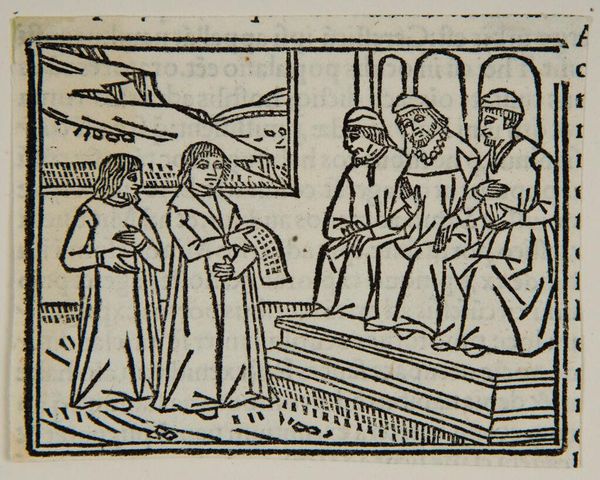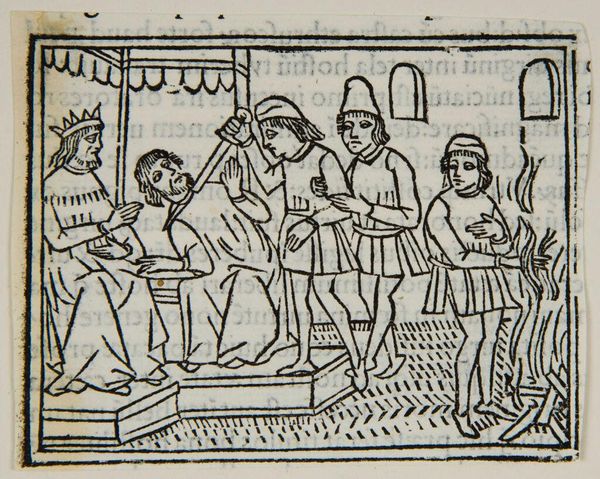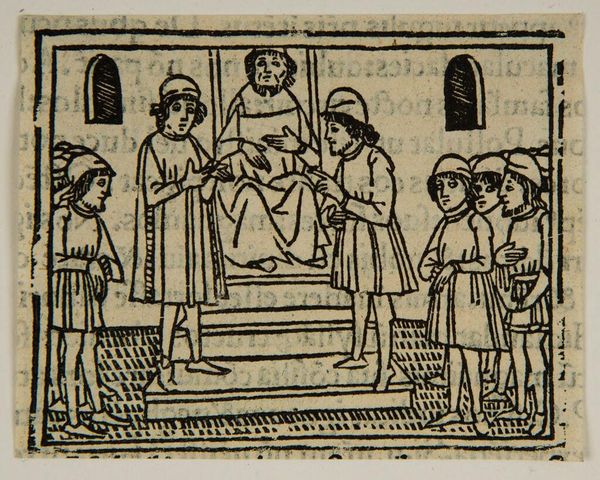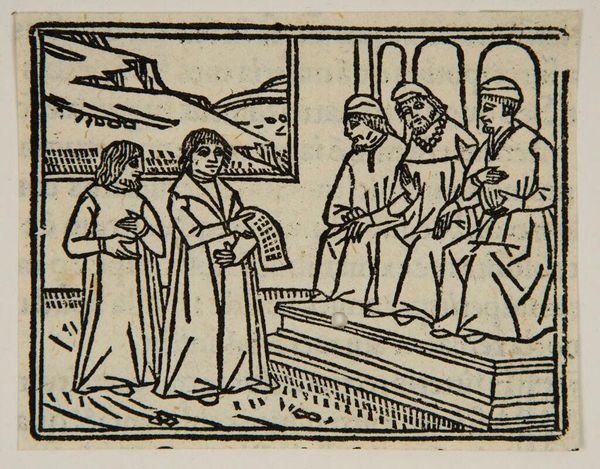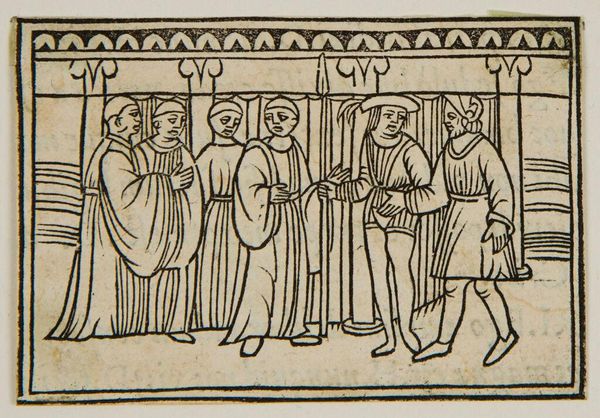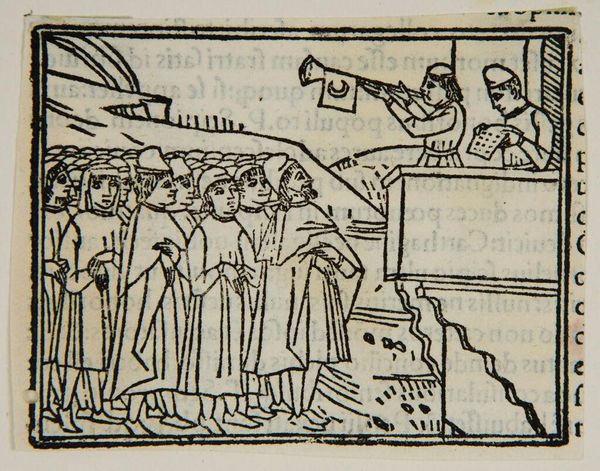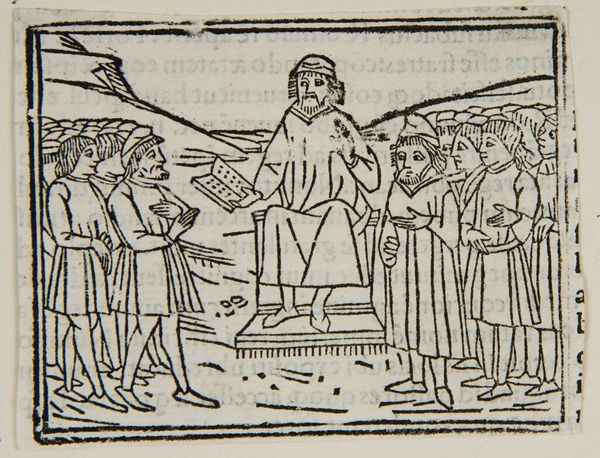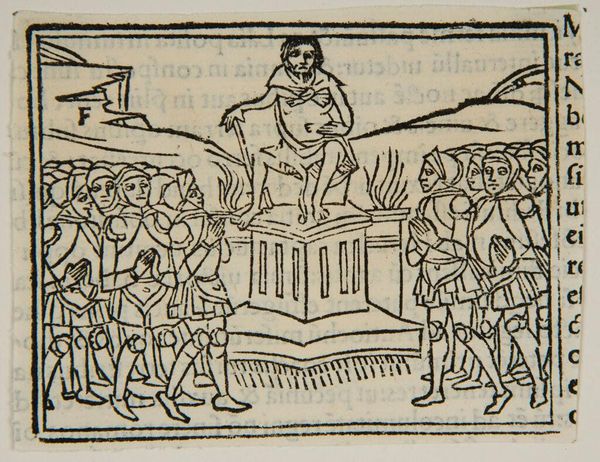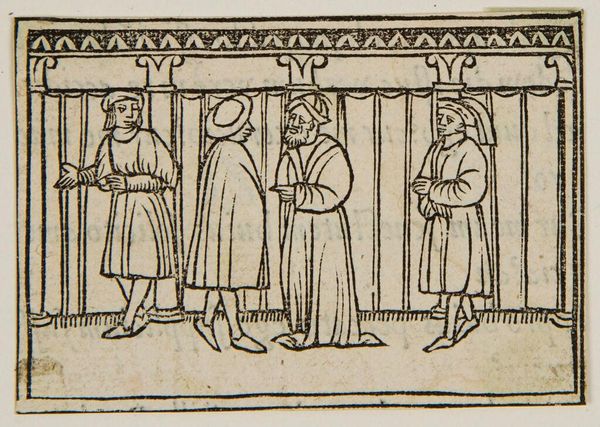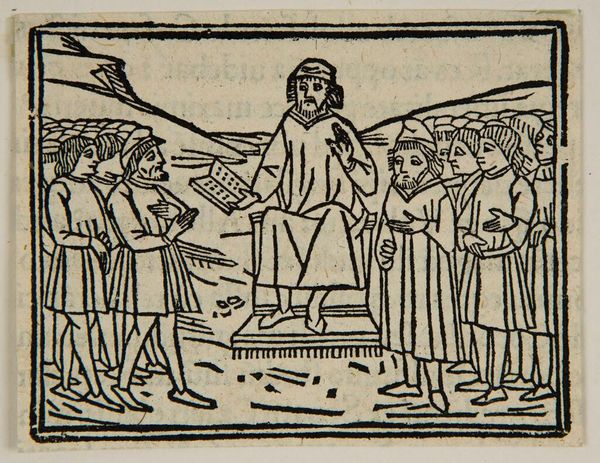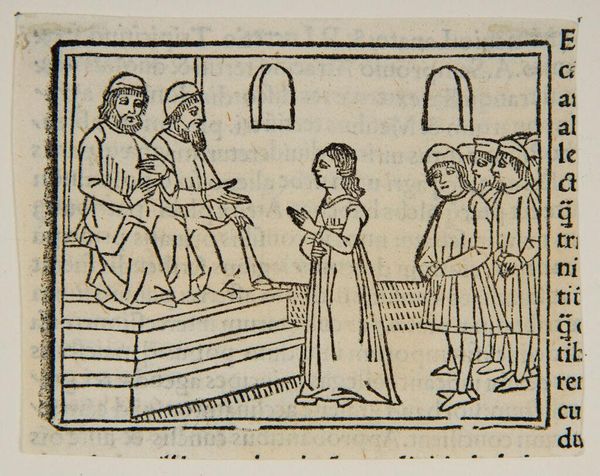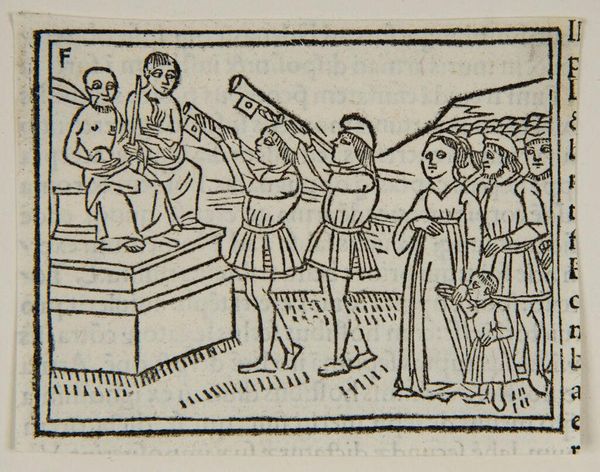
Book III.66 - Quintus Capitolinus summoning people for assembly {Primae Decadis Liber Tertius, p. XXXIIr} c. 16th century
0:00
0:00
Copyright: CC0 1.0
Curator: Let’s consider this intriguing woodcut, titled “Book III.66 - Quintus Capitolinus summoning people for assembly.” It's unsigned, an anonymous work from an unknown date housed at the Harvard Art Museums. Editor: Immediately, I’m struck by the rigidity of the figures, that almost haunting quality. It feels like a very stark announcement, a town crier’s shout made visual. Curator: Note the economy of line, how the artist uses only black and white to delineate form and space. The composition itself creates a striking contrast between the crowded assembly and the authoritative figures. Editor: Right, and there's that incredible texture achieved through simple hatching. It’s like a visual representation of the weight of civic duty, all etched out with such determined lines. A stern image indeed. Curator: Precisely. It’s a powerful reminder of how form can dictate content, shaping our understanding of the artwork's historical context and the message it conveys. Editor: A very interesting, and very relevant, use of visual language. It makes you think about the power dynamics in play, even now.
Comments
No comments
Be the first to comment and join the conversation on the ultimate creative platform.

